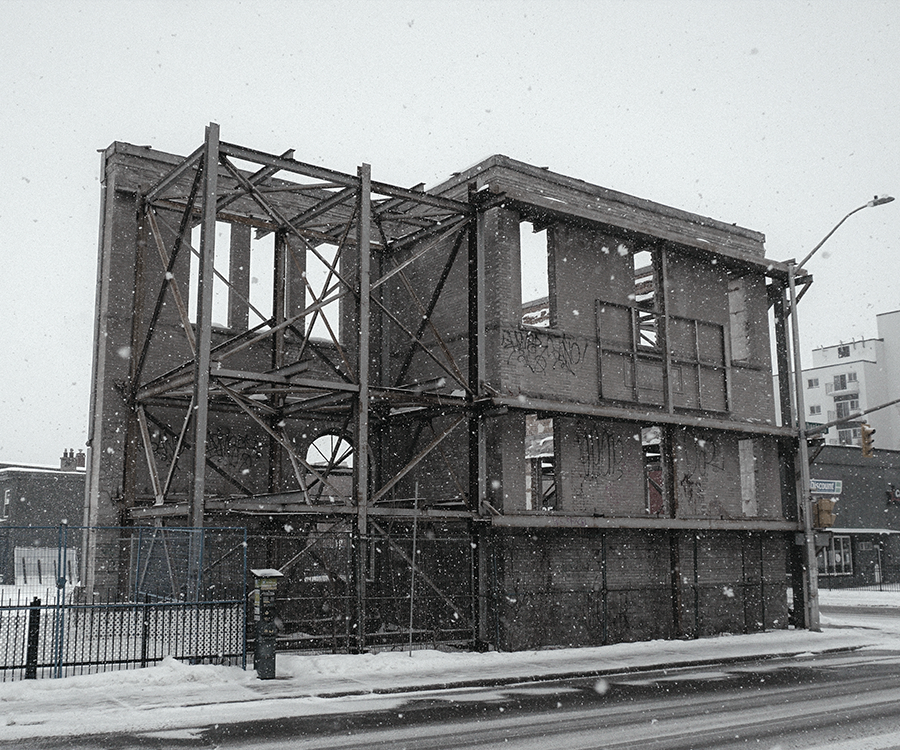Holding on to heritage: revitalizing our communities by repurposing abandoned buildings

Last fall, the City of Ottawa, like many other cities, declared a #ClimateEmergency. We’ve also declared a #HousingEmergency. We need to restore, conserve, adapt and renovate our existing buildings, including abandoned and derelict ones, to provide more housing. It can take years to get a project through planning approval and construction, so any action we take on either front must be measured, careful and, at the same time, driven by a sense of urgency.
The most sustainable building is the one that already exists:
- the concrete used to build it is already manufactured;
- the steel extracted from the earth is already processed; and,
- the trees are already harvested.
Crushing the building and throwing it into the landfill, even if we recycle what we can, only to replace it with more of the same, has a huge environmental footprint. Worse, we tear down something that is part of our community, representing the cultural values of the community both in its original design and construction, and as the community that has grown around it.
Underlying this discussion is a failure to realize that heritage conservation is all about sustainability. And this isn’t just for those buildings that we think of as “heritage”; The overall cultural context of buildings that form the collective backdrop to our cities is as important as the ones that we honor with a plaque or designate as “official heritage.”
Renovating a building is expensive. It might have tenants that need to be accommodated or moved. The renovations might affect the neighbours and new uses might need lengthy planning approval to add, or adapt, to the building. Keeping the building might seem like a lot of work.
How can we, as a society, help incentivize reuse?
Some older buildings contain dangerous materials like lead paint or asbestos, or they were not built to meet modern building codes for fire ratings or seismic activity. Removing contaminants and upgrading the building can be both expensive and disruptive. We need to take collective action to support renovation of buildings including:
- Faster planning approvals for changes of use, waivers on parking requirements and rezoning that result in lengthy carrying costs for owners where the building is part of our heritage fabric;
- Providing grant programs for hazardous material removal and disposal that defer the cost over several years, not unlike a brownfield grant for remediation of contaminated soil; and,
- Energy efficiency grants or loans to support building envelope restoration, repair and upgrades to conserve the building and reduce energy demand, which pays for itself in reduced operating costs that can be used to fund other projects or repay deep energy retrofit loans.
Building quality housing at affordable rental rates within the core of the city is important for many reasons: Not only does it provide housing in areas where there are existing transit networks, community supports and essentials (like grocery stores, parks and public spaces), building in our core also incentivizes adaptive reuse of our existing buildings. Renovating, or adding to existing abandoned buildings can help revitalize a community. In this, we need to look to the owners of these buildings.
When owners can hang on to derelict buildings, letting them negatively impact our communities, we allow them to hold our cultural memories hostage, while their buildings decay to the point where they can no longer be salvaged. At best, we preserve a façade, at worst we’re forced to accept demolition of what remains. We lose on both counts. We need to take more aggressive action and bring these owners to the table, incentivize action on their part or expropriate their buildings for a fair price if they aren’t willing. Where that is the outcome, we the citizens become the owners and developers and can incentivize change. As a city, we can invest smartly, planning a long term investment to pay off and fund innovative, creative changes that build new homes, create places for businesses to thrive and establish community anchors.
Our built heritage matters. Investing in renovation, deep energy retrofits, conservation of heritage elements and adapting our older buildings to new uses creates places for people. It rehabilitates communities and provides an important anchor for communities.
This article first appeared in the March 2020 edition of Heritage Ottawa Newsletter (Vol. 47, No 1)
Architect Toon Dreessen is President of Architects DCA and former president of The Ontario Association of Architects. For samples of our previous work, explore our portfolio